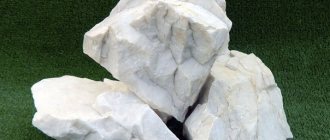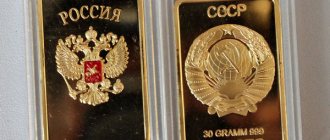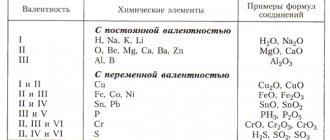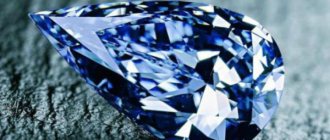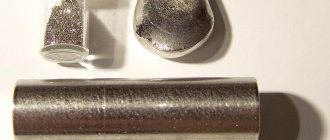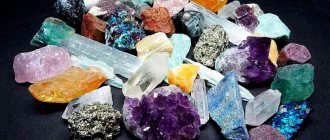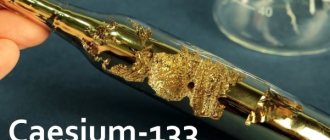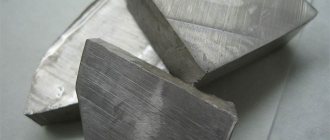Everyone knows that diamond is currently the standard of hardness, i.e. When determining the hardness of a material, the hardness of a diamond is taken as a basis. In our article we will look at the ten hardest materials in the world and see how hard they are relative to diamond. A material is considered superhard if its indicators are above 40 GPa. It should be taken into account that the hardness of the material can fluctuate depending on external factors, in particular the load applied to it. So, we present the ten hardest materials in the world.
Lonsdaleite
Lonsdaleite is very similar in structure to diamond, because they are both allotropic modifications of carbon. Lonsdaleite was discovered in the crater of a meteorite, one of the components of which was graphite. Apparently, from the loads caused by the meteorite explosion, the graphite turned into lonsdaleite. When discovered, lonsdaleite did not demonstrate any special champion hardness indicators, but it was proven that if there were no impurities in it, it would be harder than diamond! Proven hardness of lonsdaleite is up to 152 GPa
Top 10 Hardest Materials on Earth
Diamond still remains the standard of hardness and is used in various methods for measuring the mechanical hardness of materials (Rockwell, Vickers, Mohs methods). But there are materials that are not only comparable in hardness to diamond, but also superior to it in this characteristic.
In an article in the journal Popular Mechanics, their Vickers microhardness is given to compare materials. Superhard materials are those whose hardness exceeds 40 GPa. For a “standard” diamond, this indicator can fluctuate between 70 and 150 GPa, depending on its purity and the method of production (as a rule, the hardness of diamond is given as 115 GPa). The same applies to other materials: their hardness changes depending on the sample synthesis conditions, and sometimes varies depending on the direction of the load applied to it.
1. Fullerite (up to 310 GPa)
Polymerized fullerite is the hardest substance currently known to science. It is a molecular crystal - a structure in the nodes of which there are not individual atoms, but entire molecules (fullerenes are one of the allotropic modifications of carbon, shaped like soccer balls). Fullerite leaves scratches on the diamond surface, just like on plastic.
2. Lonsdaleite (up to 152 GPa)
The prediction of the existence of lonsdaleite practically coincided with its discovery in nature. This allotrope of carbon, much like diamond, was found in a meteorite crater. But natural lonsdaleite, which was probably formed from graphite, which was part of the meteorite, did not have record hardness. It was only in 2009 that scientists proved that in the absence of impurities, lonsdaleite can be harder than diamond. Its high hardness is given by approximately the same mechanism that operates in the case of wurtzite boron nitride.
3. Wurtzite boron (up to 114 GPa)
Boron nitride with a wurtzite (dense hexagonal) crystal structure is harder than it seems: when a load is applied, it undergoes local structural modifications, interatomic bonds in its lattice are redistributed, and the hardness of the material increases by 78%.
4. Nanostructured cubonite (up to 108 GPa)
Cubic boron nitride was first produced in 1957 by Robert H. Wentorf Jr. for General Electric . In 1969, the company registered the trademark "Borazon" for the crystal.
In the USSR, cubic boron nitride was first synthesized at the Institute of High Pressure Physics of the Academy of Sciences under the leadership of Academician L. F. Vereshchagin . Since 1965, CBN has been synthesized on an industrial scale using Abrasive (Leningrad).
The unique properties of Cubonite (also known as CBN, Borazon and Kingsongite) are widely used in industry. The hardness of cubonite (a cubic modification of boron nitride) is close to diamond and is 80−90 GPa. Due to the Hall-Petch law, a decrease in the size of crystal grains leads to an increase in hardness, and scientists have proven that nanostructuring of cubonite can increase its hardness to 108 GPa.
5. Carbon-boron nitride (up to 76 GPa)
The atoms of nitrogen, carbon and boron are similar in size. Carbon and boron form similar crystalline structures that are highly hard. Scientists are making attempts to synthesize superhard materials consisting of atoms of all three types - and not without success: for example, the cubic modification BC2N demonstrates a hardness of 76 GPa.
6. Boron carbide (up to 72 GPa)
Boron carbide, a material common in modern industry, was obtained back in the century before last. Its microhardness (49 GPa) can be significantly increased by introducing argon ions into the crystal lattice - up to 72 GPa.
7. Boron-carbon-silicon (up to 70 GPa)
Alloys based on the boron-carbon-silicon system are extremely resistant to chemical attack and high temperature, they are characterized by high microhardness reaching 70 GPa (for B4C-B4Si)
8. Magnesium-aluminum boride (up to 51 GPa)
The alloy of boron, magnesium and aluminum is known for its low coefficient of sliding friction (if this material were not so expensive, it could be used to make machines and mechanisms that operate without lubrication) and high hardness. Thin films of AlMgB14 obtained by pulsed laser deposition demonstrate microhardness up to 51 GPa.
9. Rhenium diboride (up to 48 GPa)
The mechanical properties of the boron and rhenium compound are very unusual: due to the layer-by-layer alternation of different atoms, rhenium diboride is anisotropic, i.e., when measuring hardness along different crystallographic planes, different values are obtained. When tested under low load, rhenium diboride exhibits a hardness of 48 GPa, but as the load increases, the hardness value drops sharply, settling at approximately 22 GPa. Therefore, some researchers doubt whether rhenium diboride should be classified as a superhard material.
10. Monocrystalline boron suboxide (up to 45 GPa)
Boron suboxide, containing an “insufficient” amount of oxygen atoms, clearly demonstrates the properties of ceramic materials: high strength, chemical inertness, abrasion resistance at a relatively low density. Boron suboxide is capable of forming grains in the form of icosahedrons, which are neither individual crystals nor quasicrystals - these are twin crystals consisting of 20 “fused” tetrahedral crystals. The hardness of boron suboxide single crystals is 45 GPa.
Fullerite
It's time to look at the hardest substance in the world - fullerite. Fullerite is a crystal that consists of molecules rather than individual atoms. Thanks to this, fullerite has phenomenal hardness; it can easily scratch diamond, just like steel scratches plastic! The hardness of fullerite is 310 GPa.
Fullerite
We have provided a list of the hardest materials in the world at the moment. As we can see, among them there are enough substances harder than diamond and, perhaps, new discoveries await us ahead that will allow us to obtain materials with even higher hardness levels!
Elbor
Elbor is also called kingsongite and borazon. This material is almost as hard as diamond. Due to this, it is widely used in the processing of various hard alloys. Elbor is a natural modification of boron nitride.
Elbor is the only boron compound that is formed in the depths of our planet. The remaining minerals, which contain boron, originate near the surface of the Earth.
Elbor was discovered in a part of the earth’s crust, which, during the evolution of the planet, seemed to “dive” under the neighboring lithospheric plate. At a depth of more than three hundred kilometers at a temperature of about 1200 degrees, chemical transformations occurred, as a result of which this superhard mineral appeared. This happened about 180 million years ago.
Together we are stronger
One metal is good, but in some combinations it is possible to impart amazing properties to the alloy.
An ultra-strong alloy of titanium and gold is the only strong material that has been shown to be biocompatible with living tissue. The beta-Ti3Au alloy is so strong that it cannot be ground in a mortar. It is already clear today that this is the future of various implants, artificial joints and bones. In addition, it can be used in drilling, sports equipment and many other areas of our lives.
An alloy of palladium, silver and some metalloids may have similar properties. Scientists at the Caltec Institute are currently working on this project.
Maraging steel
General information:
- Impact strength of KST – 0.25-0.3 MJ/m2;
- Elastic limit – 1500 MPa;
- KCU – 0.4-0.6 MJ/m2.
Maraging steel
General information:
- Impact strength of KST – 0.25-0.3 MJ/m2;
- Elastic limit – 1500 MPa;
- KCU – 0.4-0.6 MJ/m2.
Maraging steels are iron alloys that have high impact strength without losing their ductility. Despite these characteristics, the material does not hold the cutting edge. Alloys obtained by heat treatment are low-carbon substances that take their strength from intermetallic compounds. The alloy contains nickel, cobalt and other carbide-forming elements. This type of high-strength, high-alloy steel is easy to process, due to the low carbon content in its composition. A material with such characteristics has found application in the aerospace field; it is used as a coating for missile casings.
Future at $20 a skein
What is the hardest material that any average person can buy today? For just $20 you can buy 6 meters of Braeön tape. Since 2022, it has gone on sale from manufacturer Dustin McWilliams. The chemical composition and production method are kept strictly secret, but its qualities are amazing.
Absolutely anything can be secured with tape. To do this, you need to wrap it around the parts being fastened, heat it with a regular lighter, give the plastic composition the desired shape, and that’s it. After cooling, the joint will withstand a load of 1 ton.
Wonders of Wildlife
Among the living beings on our planet there are those who have something very special.
- Web of Caerostris darwini. The thread that Darwin's spider produces is stronger than steel and harder than Kevlar. It was this web that NASA scientists used when developing space protective suits.
- Teeth of the limpet mollusk - their fibrous structure is now being studied by bionics. They are so strong that they allow the mollusk to tear off algae that has grown into the stone.
Carbin
General information:
- Opening date: early 60s;
- Discoverers - Sladkov, Kudryavtsev, Korshak, Kasatkin;
- Density – 1.9-2 g/cm3.
Recently, scientists from Austria completed work on establishing the sustainable production of carbyne, which is an allotropic form of carbon based on sp-hybridization of carbon atoms. Its strength indicators are 40 times higher than those of diamond. Information about this was published in one of the issues of the scientific printed periodical “Nature Materials”.
The structure of carbine
After carefully studying its properties, scientists explained that its strength cannot be compared with any previously discovered and studied material. However, the production process encountered significant difficulties: the structure of carbyne is formed from carbon atoms collected in long chains, as a result of which it begins to break down during the manufacturing process.
To eliminate the identified problem, physicists from the public university in Vienna created a special protective coating in which carbyne was synthesized. Layers of graphene placed on top of each other and rolled into a “thermos” were used as a protective coating. While physicists worked hard to achieve stable forms, they discovered that the electrical properties of a material are affected by the length of the atomic chain.
Researchers have not learned how to extract carbyne from a protective coating without damage, so the study of the new material continues, scientists are guided only by the relative stability of atomic chains.
Carbin
Carbyne is a little-studied allotropic modification of carbon, the discoverers of which were Soviet chemists: A.M. Sladkov, Yu.P. Kudryavtsev, V.V. Korshak and V.I. Kasatochkin. Information about the results of the experiment with a detailed description of the discovery of the material in 1967 appeared on the pages of one of the largest scientific journals, “Reports of the USSR Academy of Sciences.” 15 years later, an article appeared in the American scientific journal Science that cast doubt on the results obtained by Soviet chemists. It turned out that the signals assigned to the little-studied allotropic modification of carbon could be associated with the presence of silicate impurities. Over the years, similar signals have been discovered in interstellar space.
